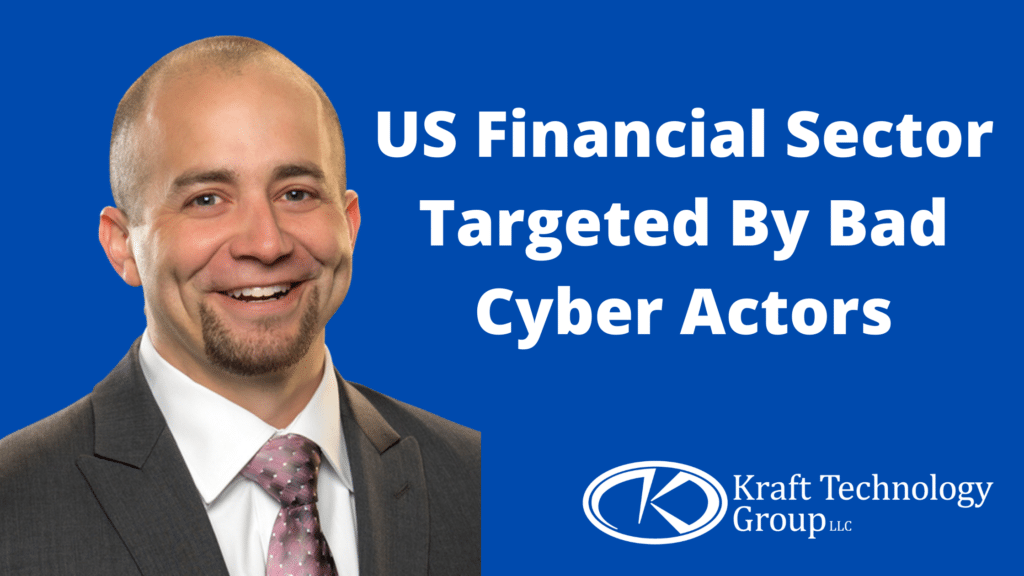US Financial Sector Targeted By Bad Cyber Actors
Cyberattacks have recently been on the rise across all business sectors, with financial services topping the targets’ list. The finance industry’s threats keep on broadening in both scope and severity, from phishing to credential stuffing.
Why Is The Financial Sector Such A Spot For Bad Cyber Actors?
By targeting financial services enterprises, they can access and steal sensitive information, which they then use to open fake accounts and credit lines needed for sustenance. But that’s not all. According to a report by F-Secure, cyberattacks on financial institutions go far beyond traditional theft or script-kiddies. There are organized gangs and even state-sponsored actors with particular interests in entities working directly or indirectly with the global finance sector.
The attackers have diverse reasons for their actions. These motivations can be broken down into three primary categories:
- Direct financial theft.
- Theft of data.
- Sabotage of data integrity.
Nobody is safe. The best way out is proper and deliberate preparation to mitigate any potential risks. First, you need to understand what makes you a target and the various types of attacks you’re likely to face.

What Are The Common Cyber Risks Faced By The Financial Sector?
- Credential Stuffing: This type of cyber attack specifically targets private and sensitive information of the end-users of financial institutions like banks. The actors then use the stolen account details for unauthorized access into user accounts, usually via automated large-scale login requests. The stolen data is manipulated and used to attack parent servers and websites for illegal entry into crucial IT infrastructure. Alternatively, the attackers can buy the list of keys from the dark web. There are actors whose only interest is hacking your password protocols and selling access to other players.
- Distributed Denial-of-Services (DDoS) Attacks: Here, bad actors orchestrate a slowdown in your networks by making your websites unavailable to users. It’s usually targeted towards institutions the attackers disagree with. Sometimes, your competitions can also buy DDoS in the dark web from as low as $150 to silence your websites. These attacks cost organizations massive financial and reputational dents. The attackers can also use DDoS as a decoy to distract you from a significant breach.
- Phishing Attacks: The most common type is email phishing. Your users or employees receive regular emails, only that they have malicious links or images embedded in them. When these links are clicked, the attackers immediately begin harvesting sensitive data that can be used for unauthorized financial transactions. In some cases, hackers go as far as making exact copies of users’ credit cards.
- Ransomware Attacks: It is similar to phishing. The only difference is that it only targets insiders in financial service enterprises. The clicking of links automatically encrypts all the data, making it impossible to access both users and owners; unless a fee is settled.
- Exploitation Of The Internet of Things (IoT): Most cybersecurity measures address software vulnerabilities. As though they’re acting on this intel, cyberattackers are now using less secure hardware as backdoors to critical IT infrastructure. Instead of struggling with your complex password protocols, why not hack the less protected IP cameras and monitor your users as they key in their passcodes? From home routers to printers, you can never tell the extent of risks IoT devices put you into. Once you understand the risks you face, you can formulate and implement preventive and mitigation measures more accurately.
What Can The Financial Sector Do For Protection Against Bad Cyber Actors?
- Cybersecurity Awareness Training For Both Users And Employees: It’s proven that proper cybersecurity training reduces the chances of successful cyberattacks by up to 70%. Financial service providers should teach both their end-users and staff on common tricks used by bad cyber actors, how to avert, and report them. All employees should have basic troubleshooting and immediate-response skills at their fingertips. The faster they can respond to breach attempts, the better, and the less the financial ramifications.
- Deploy Email And Website Filters: As you must have noticed, most cyberattacks stem from malicious emails or unhealthy sites. Several DNS Filtering options block users from accessing threat sites or websites that go against your regulations. Many stakeholders in the finance industry are now adopting DMARC protocols for protection against fake emails.
- Regularly Update Your Systems: Usually, the latest software versions come with better security features in response to emerging threats. Periodically updating your systems ensures that you have the latest and safest versions. What happens to outdated hardware or those that you no longer use? They still contain some very critical data that can be used to jeopardize your systems. Have decisive protocols to discard them that should include provisions for wiping their memories if necessary. Things like expired credit cards carry a lot of information that should not land on the wrong hands.
- Network Assessment: Several financial institutions have had to grapple with bad cyber actors that camped in their systems weeks or even months before the actual attacks. These are people who have taken their time to learn your communication patterns and, therefore, easily predict your next moves. Given that they have been in your networks for that long, expunging them is not easy. This is why executives and IT managers are advised to perform regular assessments on their systems. It helps identify any vulnerabilities and potential risks before they become real issues.
The truth is that all business sectors are potential targets for bad cyber actors, but the finance industry faces even more significant risks. Therefore, stakeholders in this sector must see that they have sufficient security measures that are precisely implemented.
Looking to Keep Your Business Data and IT Systems Secure?
Speak to us now by calling us on (615) 600-4411, and let us help you keep your business’ data, networks, and systems safe.




